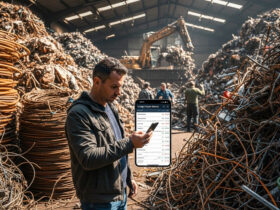Welcome to a comprehensive guide on the essential lifesaving technology – medical personal alarms. Often taken for granted or overlooked, these devices are the silent security companions of our older adults, as well as individuals living with certain medical conditions. Simple yet sophisticated, a medical personal alarm can be the crucial link between an emergency and timely assistance. With a rapidly increasing ageing population, understanding the functionality, application, and significance of these alarms is not only relevant but also crucial.
This guide aims to shed light on the specifics of medical personal alarms, providing an in-depth understanding of what they are, how they work, and why they are a vital addition to any home or individual with medical needs.
The Lifesaving Essence of Medical Personal Alarms
Medical personal alarms are a critical aspect of promoting safety and independence in the vulnerable members of our society. Unanticipated medical emergencies such as falls, heart attacks, and strokes can occur without warning. In such circumstances, time is of the essence, and these alarms play a pivotal role in ensuring help is initiated in a timely fashion.
Simply put, medical alarms are remote emergency communication devices that enable the user to alert a monitoring center or chosen contact in case of a medical or security emergency. A prompt response to these alerts can considerably enhance the chance of recovery and may even save lives.
Types of Medical Personal Alarms
A broad spectrum of medical personal alarms is available on market, developed with the intention of catering to different needs and preferences. Among these are fall detectors, designed to automatically activate in case of a fall, thus benefiting those at risk of falls due to conditions like dementia, osteoporosis, Parkinson’s and the like.
SOS buttons or panic buttons on the other hand, can be manually pressed in any type of emergency, allowing users to summon immediate help without needing to get to their phone. GPS alarms are designed for those who enjoy active living, facilitating location tracking remotely, thus increasing user safety during outdoor activities.
How Medical Personal Alarms Work
To understand the real value of a medical personal alarm, one must know how they function. The device typically consists of a base unit and a wearable component, often in the form of a pendant or wristband. When activated – either manually or automatically – the device sends a distress signal to a pre-set number, monitoring station or sometimes directly to emergency services.
Once the alarm is activated, the person at the receiving end can speak directly to the user via a two-way speaker, evaluating the situation and taking action accordingly. In some variations, the alarm can transmit relevant information such as medical history and user location, further enabling an appropriate response.
Factors to Consider When Choosing a Medical Personal Alarm
Choosing the right medical personal alarm can be a challenge. There is no definitive answer as to which alarm is the absolute best, as it honestly depends on individual lifestyle, mobility, medical condition, and the device’s range. For instance, a fall detector would be suitable for someone prone to fainting spells or with a history of falls, as the device automatically sends out a distress signal.
Other than these individual considerations, it’s good to verify whether the device can be used away from home, if it’s waterproof for usage in the shower, and whether it provides a two-way communication feature for full contextual communication during an emergency.
The Impact of Medical Personal Alarms on Independent Living
The ability to live independently while ensuring safety is something we all welcome, especially for our ageing population. With a medical personal alarm, they can live in the comfort of their homes without the fear of being helpless in an emergency. These devices provide peace of mind to not only the users, but also their family members knowing that they can reach help at just the press of a button.
The technology has given a revolutionizing change, promoting independence and offering personalized safety in an unobtrusive way. The positive impact on the mental wellbeing of elderly individuals living on their own is undeniable with the usage of medical personal alarms.
Australian Legislation and Medical Personal Alarms
Within Australia, several standards and regulations govern the use of personal alarms. Importantly, many of these devices are covered by Australian Standard AS4607-1999. This standard provides manufacturers with guidelines to ensure the alarm systems are built with quality materials and operate effectively.
Australian citizens may be eligible to apply for funding help through schemes such as the National Disability Insurance Scheme (NDIS) or the Commonwealth Home Support Program (CHSP), which provides financial support for eligible individuals, thus making the alarms more accessible.
Real-Life Tales of Medical Personal Alarms Saving Lives
Consider the story of Ethel, a 75-year-old living alone in Melbourne, who equipped her home with a fall detector alert system. One day, Ethel fell and was unable to get up or reach her phone. The fall detector successfully alerted her contact who was able to send help in time.
Or another incident involved Robert, a Parkinson’s patient who loved walks in the neighborhood park. Using his GPS alarm, family members were able to locate him when he lost his way back home.
These are but a few examples of how medical personal alarms save lives and prevent potential catastrophes daily.
Conclusion
In conclusion, medical personal alarms are undeniably a fundamental tool to ensure the security of vulnerable individuals living independently. The benefits, peace of mind, and the potential life-saving implications of these devices can never be overstated.
The decision to obtain a medical personal alarm should not be taken lightly. Consider the individual’s lifestyle, medical history, and living arrangements. Above all, choose a device that will provide the most comprehensive safety features while catering to specific needs. As the adage goes, ‘prevention is better than cure’, and in this context, a medical personal alarm is potentially the best preventive measure one can adopt.










Find Us on Socials